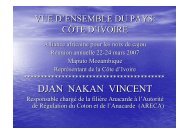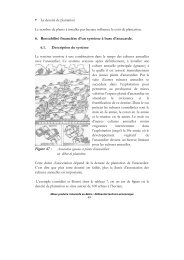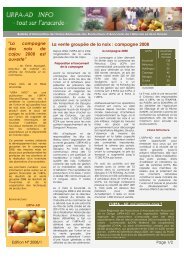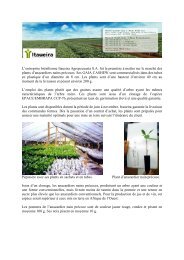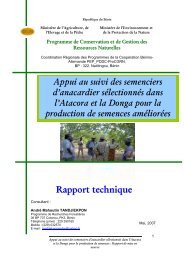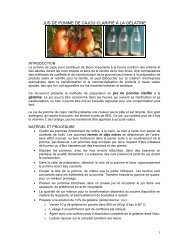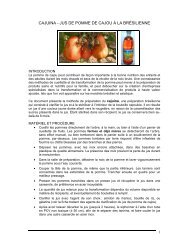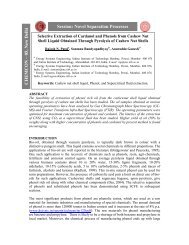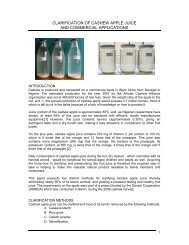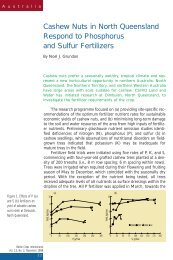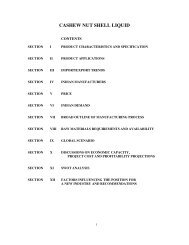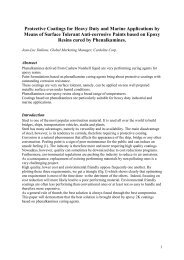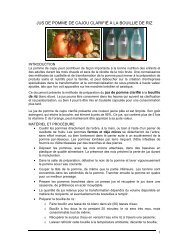Osmotic Blistering
Osmotic Blistering
Osmotic Blistering
Create successful ePaper yourself
Turn your PDF publications into a flip-book with our unique Google optimized e-Paper software.
CARDANOL CHEMICALS N.V.<br />
International distributor of Cardolite Corporation<br />
Offerlaan 116-118<br />
B-9000 Gent<br />
Belgium<br />
• the pre-treated carried out properly<br />
• the application is made in the right way<br />
• the primer is solvent free<br />
The coating is for most paint companies<br />
the only parameter in control. We have to<br />
make sure that the primer is not subject of<br />
blistering:<br />
• Adhesion: The most important factor is<br />
the adhesion on the substrate. A low<br />
viscous primer that spreads out well<br />
and penetrates the concrete profound is<br />
less likely to provoke blisters.<br />
• Flexibility: The flexibility is not only<br />
of importance in regard to the final use<br />
of the coating. The flexibility and the<br />
influence of temperature changes<br />
correlates directly with the visual<br />
aspect of blisters.<br />
• Water soluble constituents: Research<br />
has proven that humid concrete<br />
substrates coated with a solvent free<br />
primer - and preserved under humid<br />
conditions - stay free of blister even<br />
after several years (Ref.: 4, 5). Solvent<br />
containing primers provoked blisters<br />
under the same conditions (Ref.: 6).<br />
The primer is stable under alkali<br />
conditions and has no water dilutable<br />
decomposition products.<br />
Primer formulation:<br />
We developed a concrete primer<br />
complying too the above guidelines, A low<br />
viscous Bisphenol A resin diluted with a<br />
Constituents Primer 1 Primer 2<br />
Part A<br />
Bisphenol A (Eurepox 80 80<br />
730)<br />
Necires EPXL-2 20 20<br />
Part B<br />
Cardolite@ NC 558 50 50<br />
Euredur 13 0 2<br />
DFT (CL) 300 300<br />
CARDOLITE<br />
ARTICLES<br />
Article regarding NC 558<br />
hydrocarbon resin is used as A component.<br />
Cardolitb NC 558, a low viscous<br />
Phenalkamine hardener, cross-links the<br />
system. Euredur 13 is used to adjust the<br />
cure at lower temperatures (5”C/95%<br />
R.H.). The primer is applied at 300~ film<br />
thickness.<br />
Necirez EPXL-2 is a non-reactive<br />
flexibiliser but contains aromatic OHgroups<br />
that bound in the hydrocarbon resin<br />
to the rest of the primer. The dense crosslinking<br />
obtained with Cardolite@ NC 558<br />
further minimises migration of the<br />
flexibiliser. The concentration of<br />
accelerator is kept limited hence its<br />
influence on the flexibility and<br />
hydrophobicity of the primer. The water<br />
vapour transmission rate of this primer is<br />
extremely low (1.33 lo-” mih) and assures<br />
a complete seal off the substrate.<br />
Two types of humid concrete are used as<br />
substrate:<br />
• High performance concrete: The high<br />
performance concrete (62 N/mm2) is<br />
since its dense structure subject of an<br />
increased capillarity and a less<br />
profound penetration.<br />
• Regular concrete: Concrete with<br />
compression strength of 30 N/mm* is<br />
more accessible for the epoxy primer<br />
but may contain more water.<br />
Accelerated test method:<br />
Sandblasted concrete tiles, of which the<br />
four edges are primed, are totally<br />
submerged for 2 weeks in water. Three to<br />
four hours prior to the application of the<br />
primer they are taken out and dried with a<br />
cloth. The water content of the substrate<br />
varies between 5.5% and 6.8%, depending<br />
on the type of concrete.<br />
Date issued: 1999.05<br />
Document #:<br />
C-5.51/2/B<br />
Revision: 0




